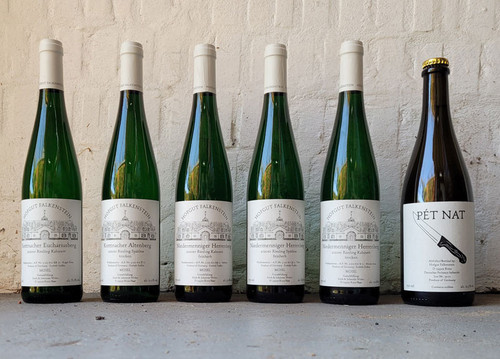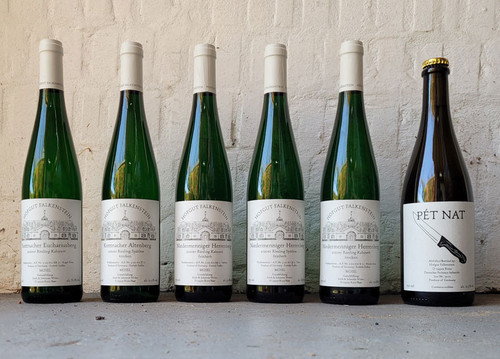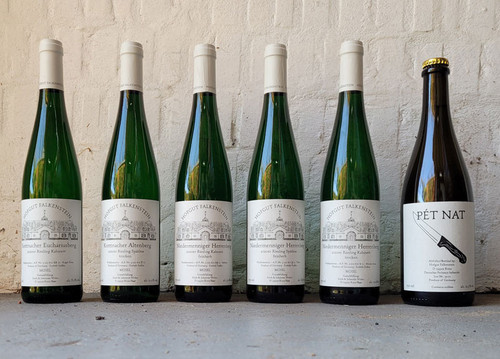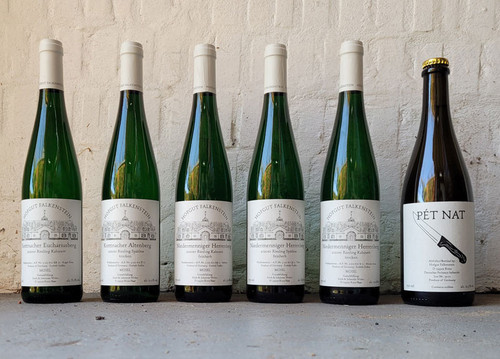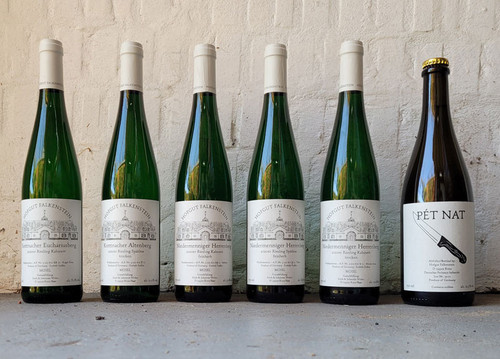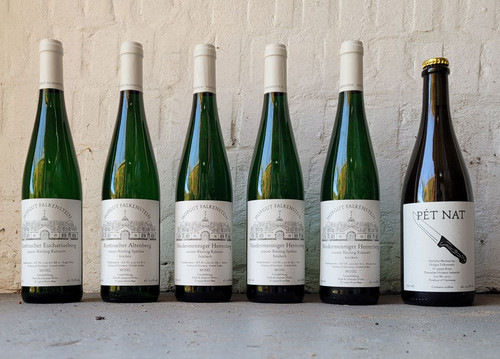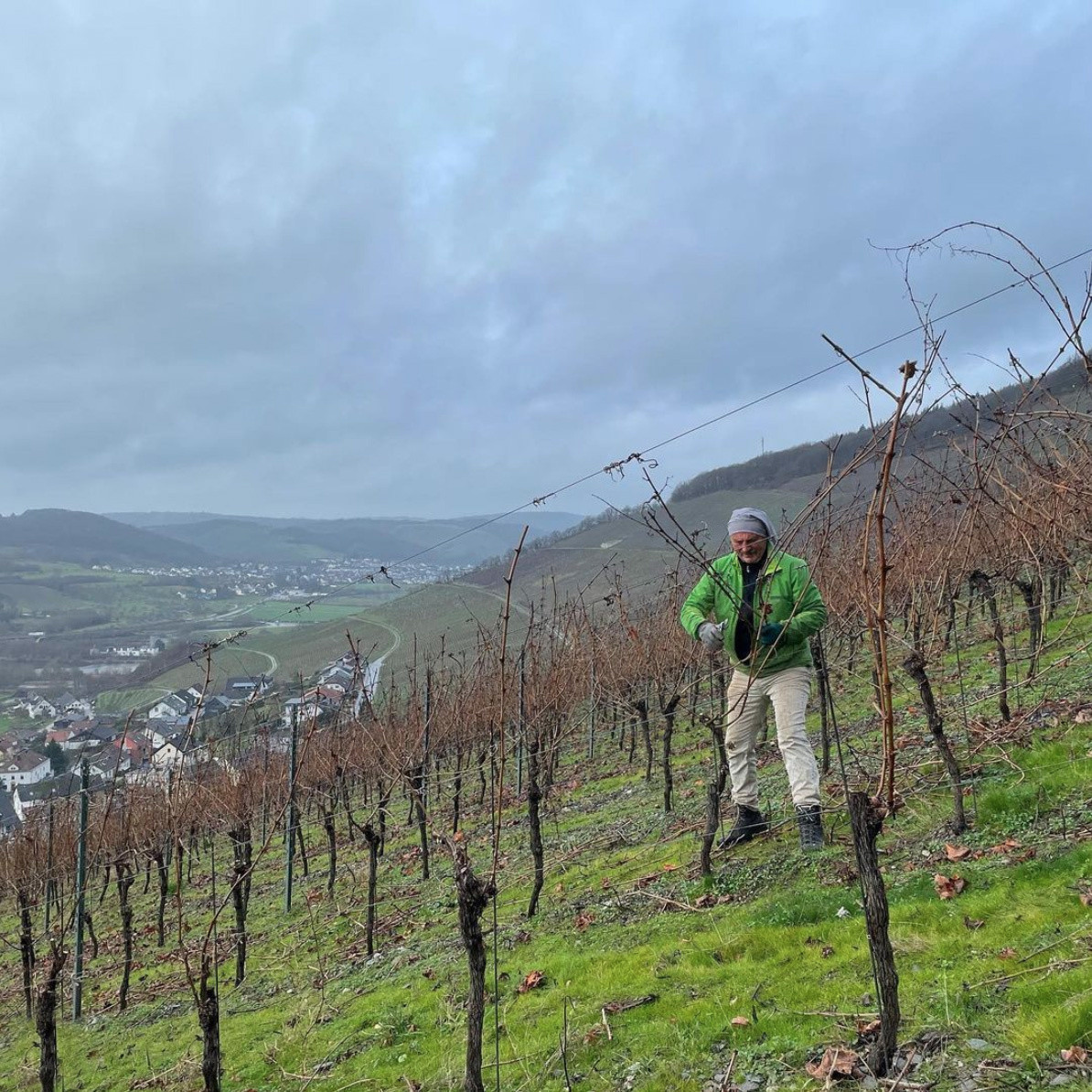
Falkenstein 2023
I truly believe that if you want to understand Riesling and why it’s the greatest grape on the planet, you have to experience the wines of the top estates. Donnhoff, Selbach-Oster, Willi Schaeffer, Egon Muller, Von Winning, Schafer-Frohlich, Florian Lauer, and Hofgut Falkenstein, just to name a few. Names like these are synonymous with names like Rousseau, Fourrier, PYCM, Comtes-Lafon in Burgundy. Chave & Gonan in the Northern Rhone. Conterno and Mascarello in Barolo. The prices might not indicate it, but Hofgut Falkenstein is an estate whose wines are so synonymous with their region they come to help define that place.
Most of Falkenstein’s minuscule releases are quickly swallowed up by insatiable market demand, but we’ve been lucky enough to secure embarrassingly small quantities of their 2023s. Long a German wine insider secret, these are simply some of the best wines on the planet, and every Riesling lover should grab whatever they can from them. Everything that makes German Riesling so profound, from its shimmering lightness to its perfect balance of sugar and acid to the exacting precision of the families who make it, is distilled to its purest essence at this estate. Falkenstein continues to make one of the purest expressions of the riesling grape I have come across.
In 1985, Erich Weber moved his family to Falkensteinerhof in the Saar Valley. This windy tributary of the Mosel is very cool, one of the most northerly latitudes for winegrowing on earth, and the resulting wines brim with tension and grace. Here there’s less protection from brisk, western winds, giving the wines core of cool acidity, which the Falkenstein lineup demonstrates in spades. If you’ve ever had Florian Lauer, Hermann Ludes, or Egon Müller, you know the kind of chiseled majesty the Saar is capable of.
Hofgut Falkenstein is a throwback to 20th century German wine. Before inventions like sterile filtration and temperature control became available in the 1960s, most German wine – even so-called “fruity” Kabinetts and Spätleses – were much drier than what we see today. Falkenstein wines follow in this vein, most often carrying just enough sugar to balance out the soaring acidity. And Erich and his Johannes work like it’s the 19th century, eschewing herbicides and pesticides in the vineyard and allowing native groundcover to grow as it will. In the cellar, they’re hands off too. All fermentations happen spontaneously, with only small amounts of sulfur added to the wines. Every wine is a single vineyard bottling, and every vintage, the wine from each vineyard goes into the same (often 75+-year-old) neutral oak cask as it has for decades, noted by the AP numbers (these denote which foudre the wine came from) on each bottling.
The results are practically my ideal white wine: featherweight yet deeply complex, with a faint spritz and juicy acidity making them some of the easiest-drinking wines you’ll ever have. And while it frankly seems, in a way, beneath these wines to stress how good of a deal they are, it can't be ignored. You can have some of the finest white wine on the planet, often without even spending much more than $40 for a bottle. I can’t stress enough that anyone who’s been bitten by the Riesling bug owes it to themselves to try these wines. Just act fast, because we have very little to go around!
Here is a link to a little article and writeup on the 23s from Lars Carlsberg.
Wines are in stock now.
Store pickup and shipping are available, as always. If you have any questions, please don't hesitate to respond to this email or call 607-319-0500.
Mix and match any 6 bottles for an additional 10% off, or 12 bottles for an additional 15% off!
